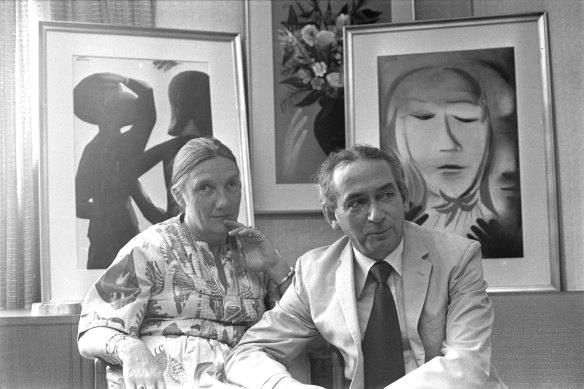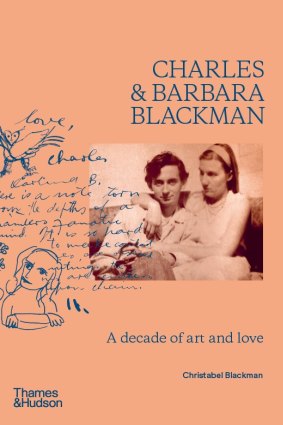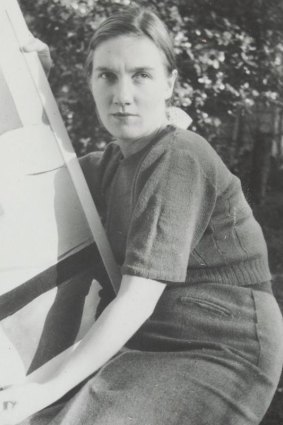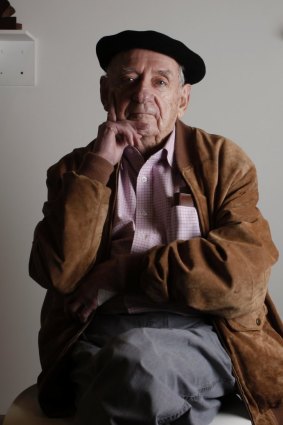By Chloe Wolifson
ART
Charles & Barbara Blackman: A Decade of Art and Love
Christabel Blackman.
Thames & Hudson, $59.99
It would be easy to jump to the conclusion that a book dedicated to a decade in the life of a couple, written by their child and based on the discovery of a cache of old love letters, could be a bit of a navel-gazer. Even if that couple are feted for their contributions to Australian cultural life, the premise might suggest that this could be one for dyed-in-the-wool fans.
However, Charles & Barbara Blackman: A Decade of Art and Love transcends those assumptions. Christabel Blackman has used that small treasure trove of letters as a leaping-off point, transporting the reader back in time and producing a richly cinematic tale of Australia’s evolving cultural life in the 1950s.

Charles and Barbara Blackman in 1977 at the opening of an exhibition of his paintings.Credit: South China Morning Post via Getty Images
The book’s design honours its epistolary origins, with a cover embossed with a photograph of the couple curled up together overlaid with Charles’ handwriting and ink drawings, and endpapers featuring photographs of the envelopes containing the letters sent from Charles to Barbara when he was pursuing the artist’s life in Melbourne as she, an emerging writer and poet, completed studies in Brisbane.
Thin, matte paper stock suggesting letter-writing stationery features marginalia including never-before-seen sketches by Charles Blackman along with the couples’ handwriting, official documents and more than 160 of Blackman’s paintings.

Credit:
The decade in question commences at the beginning of the couple’s relationship (they were married from 1952 to 1978) and concludes with the year of the author’s birth (with her own anecdotes drawn from conversations with her parents sprinkled judiciously throughout).
The book embarks on a whistle-stop biography of the two protagonists to preface this period, and Christabel Blackman’s matter-of-fact descriptions of the trials and tribulations of her family’s early stories provides an insight into the circumstantial difficulties of life in early 20th-century Australia – notably for many women, children and returned servicemen.
The book explores how Barbara and Charles Blackman became the keystones to each other’s lives, supporting each other emotionally and practically – Charles after a deprived childhood, Barbara with deteriorating vision. The content of the letters themselves is poetic, dramatic and often achingly heartfelt, written urgently and posted randomly. But there is only one letter written by Barbara, the rest are by Charles.

Barbara Blackman in the 1950s.
The book does feature Barbara’s distinct literary voice, drawn from carbon copies of her own typewritten letters, her journals and other correspondence, though little is included of her published work compared with Charles’ paintings. Because of this, it sometimes seems to give more space to Charles’ visually driven perspective than Barbara’s more necessarily introspective one. However, their mutual support and partnership is clear nonetheless. Throughout the book there are many descriptions of humble domestic and studio settings (frequently one and the same) providing a vivid picture of daily life in the 1950s.

Charles Blackman in 2010.Credit: Louise Kennerley
The author draws on her own profession of fine art conservation to provide fascinating insights into her father’s evolving and often necessarily frugal approach to the tools of his trade. The reader is transported into the sights and smells of the studio, peering over Charles’ shoulder as he mixes his paints.
This is a decade of art and love not only of its titular protagonists, but also of those the Blackmans chose to surround themselves with. The book is populated with a motley crew whose fascinating lives intersected with and impacted on the Blackmans. A colourful picture develops of a web of strong, almost instantaneous friendships founded in mutual admiration, and in unadulterated enthusiasm for an uncompromising, creative and fun existence.
Fascinating anecdotes feature a rotating cast of characters, including artists and other creative people such as Mirka and Georges Mora, Arthur Boyd, and Joy Hester, with surprise appearances from the likes of Albert Namatjira and Barry Humphries. It’s a portrait of a contemporary Australian art world in its embryonic stages, with Charles’ letters recounting time spent with Sunday and John Reed and their community at Heide, and descriptions of the couple’s involvement in the Contemporary Art Society of Victoria. This culminates in the Antipodeans exhibition and manifesto, a moment that has gained profound status in Australian art history of which the book provides a balanced reassessment.
From art fairs to espresso machines, elements of modern Australian cultural life that are now taken for granted found their footing in Melbourne in the 1950s thanks to many in this story. A captivating portrayal of Australia’s burgeoning art and cultural scene and the people who helped to bring it to life, this book reveals the tenacity, creativity, strength and love that characterised not only the Blackmans but also their community.
The Booklist is a weekly newsletter for book lovers from books editor Jason Steger. Get it delivered every Friday.